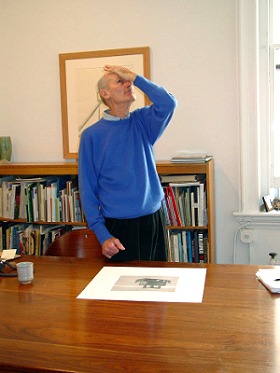Richard Artschwager
Richard Artschwager was born in Washington, D.C. in 1923. He studied at Cornell University at Ithaca and was taught painting by the Cubist painter Amédée Ozenfant in New York. He initially earned a living making furniture.
Artschwager’s oeuvre consists of paintings, drawings, photographic works and objects. His works do not surrender their meaning easily and Artschwager often leaves the viewer feeling puzzled. His paintings are executed in a Hyperrealist style with a strong perspective. By choosing a background with a strong relief, which draws all our attention, he consciously destroys the effect of depth. He also seeks discrepancies between our perception of various visual effects in his so-called ‘furniture sculptures’. These resemble real items of furniture, but are in fact imitations. They cannot perform the functions they appear to suggest: a chair is too tall to be sat upon and, upon closer inspection, a table with an overhanging tablecloth turns out to be a block of painted Formica. Artschwager works in the gap between what something is and how it appears: between art work and object. Artschwager frequently uses industrial materials such as Formica, Perspex and scouring pads. He is particularly fond of Formica, which is available in a great variety of wood patterns, because of its misleading visual effect. Sometimes he paints the faux bois decoration by hand.
Over the decades Artschwager has worked in a variety of ways and his works have been designated as Pop Art, Minimalism and Conceptual Art although his work never seems to fit wholly within any of these categories.
